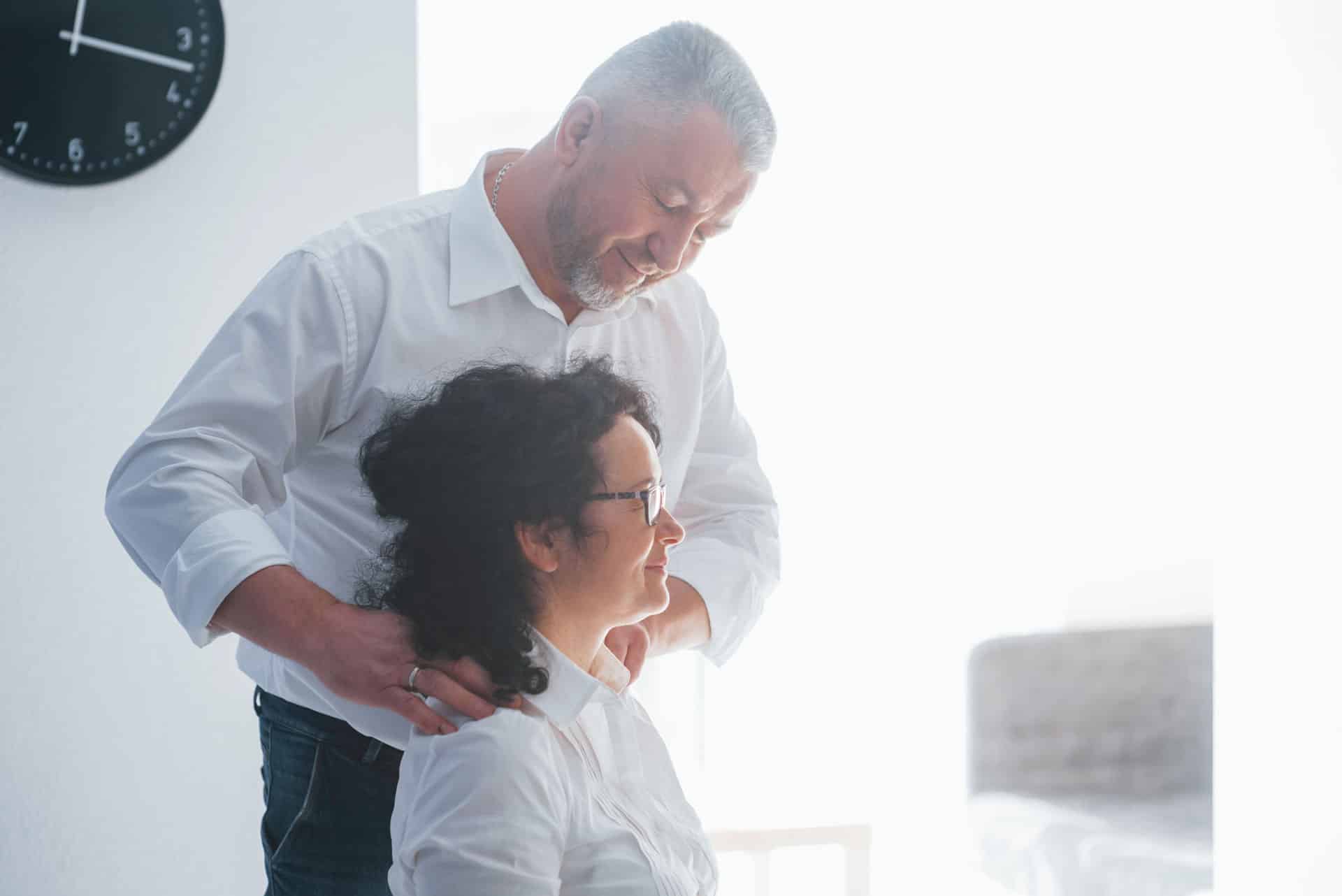
As we age, it's common to experience increased pain and discomfort in our joints, muscles, and connective tissues. While aging is inevitable, living with persistent pain doesn’t have to be. Among the emerging solutions for managing age-related pain, SoftWave Therapy has gained attention for its non-invasive, regenerative properties. This innovative treatment uses acoustic waves to stimulate healing and reduce inflammation, offering a promising alternative to more invasive procedures or long-term reliance on medication.
For adult individuals seeking safer, drug-free ways to manage chronic pain, understanding how SoftWave Therapy works and its role in alleviating age-related discomfort is essential. Whether you're dealing with arthritis, tendonitis, or general wear and tear, this therapy could be a transformative option on your wellness journey.
SoftWave Therapy, also known as extracorporeal shockwave therapy (ESWT), is a non-invasive treatment that uses high-energy acoustic waves to stimulate the body’s natural healing processes. This form of regenerative medicine is particularly effective for adults seeking relief from chronic pain associated with aging.
The therapy works by directing these acoustic waves to the affected area of the body, where they penetrate deep into soft tissues. These waves cause controlled microtrauma at a cellular level, which triggers the body to increase blood flow and stimulate cellular repair. This process enhances collagen production, reduces inflammation, and promotes the formation of new blood vessels, collectively leading to tissue regeneration and pain reduction.
Unlike medications that may simply mask pain symptoms, SoftWave Therapy addresses the root cause of discomfort by helping the body repair itself. It also does not involve surgery, injections, or anesthesia, making it especially suitable for older adults who may have medical conditions that limit more invasive options.
Patients often begin to notice improvements after just a few sessions, with continued healing occurring over several weeks. Because the therapy encourages long-term recovery, it can offer sustained relief from conditions such as arthritis, tendinopathies, and other musculoskeletal issues that commonly affect aging adults.
Understanding the science behind SoftWave Therapy gives insight into why it’s becoming a popular choice for those looking to manage age-related pain in a safe, effective way. This natural, healing-focused approach offers a promising solution for those seeking pain relief without the risks of surgery or long-term medication use.
Related: 6 Conditions You Didn’t Know SoftWave Therapy Could Treat

SoftWave Therapy has proven effective in treating a wide range of age-related musculoskeletal conditions, many of which are common among adults experiencing chronic pain. As people age, the wear and tear on their bodies can lead to persistent discomfort that affects mobility, sleep quality, and overall quality of life. Fortunately, SoftWave Therapy provides a targeted approach to addressing these issues by stimulating tissue regeneration and reducing inflammation.
One of the most frequently treated conditions is osteoarthritis, particularly in weight-bearing joints like the knees and hips. SoftWave Therapy can reduce joint inflammation and promote cartilage health, leading to decreased stiffness and improved function. It’s also widely used for treating tendinopathies such as rotator cuff tendinitis, Achilles tendinitis, and tennis elbow, which become more common with age due to repetitive use and reduced tissue elasticity.
Additionally, SoftWave Therapy is effective in managing chronic back and neck pain—conditions that are often tied to spinal degeneration, herniated discs, or muscle imbalances in older adults. The therapy helps relax muscle tension and encourages healing in surrounding soft tissues.
Plantar fasciitis, a painful condition affecting the heel and foot, is another common issue in older individuals that responds well to SoftWave Therapy. The treatment can significantly reduce inflammation in the plantar fascia, restoring mobility and comfort.
By addressing the root causes of these conditions rather than just masking symptoms, SoftWave Therapy allows aging adults to maintain an active lifestyle with less dependence on pain medications or surgical interventions.
Related: How SoftWave Therapy Treats Plantar Fasciitis Without Surgery
Traditional methods for managing age-related pain often include prescription medications, physical therapy, corticosteroid injections, and in more severe cases, surgical intervention. While each of these approaches can provide relief, they also come with potential drawbacks, especially for older adults.
Pain medications, including NSAIDs and opioids, are commonly used to reduce inflammation and discomfort. However, long-term use of these drugs can lead to dependency, gastrointestinal issues, and increased risk of cardiovascular complications. For aging adults who may already be managing other health concerns, the side effects of medication can become a significant issue.
Physical therapy is another conventional approach that promotes mobility and strength. While effective, it often requires a longer time commitment and consistent effort, and results can vary depending on the individual’s condition and response to therapy. Similarly, corticosteroid injections can reduce inflammation temporarily, but they do not promote healing and may even weaken tissues over time if overused.
Surgery, though sometimes necessary, is typically considered a last resort due to the risks of anesthesia, infection, and extended recovery times—factors that are particularly concerning for older individuals.
In contrast, SoftWave Therapy offers a non-invasive, drug-free alternative that focuses on stimulating the body’s own regenerative abilities. It not only addresses the source of pain but also encourages long-term healing without the complications associated with other treatments. For aging adults seeking a safer and more natural way to manage pain, SoftWave Therapy presents a compelling option that bridges the gap between conservative and invasive care.
Related: Can SoftWave Therapy Improve Blood Flow and Circulation?
SoftWave Therapy offers a wide range of benefits that make it an appealing treatment option for aging adults dealing with chronic or acute musculoskeletal pain. As a regenerative and non-invasive therapy, it aligns well with the needs of older individuals who are often looking for safe, effective, and low-risk solutions to pain management.
Here are some of the most significant benefits of SoftWave Therapy for older adults:
These benefits collectively make SoftWave Therapy a powerful option for adults seeking lasting relief from age-related pain. It empowers individuals to maintain independence, mobility, and overall wellness without the risks and limitations of more traditional interventions.
Related: Chronic Pain Solutions: How SoftWave Therapy Can Help
Understanding what happens during a SoftWave Therapy session can help alleviate concerns and set realistic expectations for first-time patients. For aging adults considering this treatment, the process is designed to be comfortable, efficient, and minimally disruptive to daily life.
A typical SoftWave Therapy session begins with a consultation to identify the specific areas of pain and assess the patient’s overall health and mobility. Once a treatment plan is established, the therapy is administered using a specialized handheld device that delivers high-energy acoustic waves to the targeted area.
The procedure is performed while the patient is seated or lying down, depending on the location being treated. A gel is applied to the skin to ensure effective transmission of the acoustic waves. Most patients describe the sensation as mild tapping or pressure, with some areas potentially feeling more intense if inflammation or injury is present. However, the intensity is adjustable, and practitioners can modify the settings for maximum comfort.
Each session typically lasts between 10 to 20 minutes, and there is no need for anesthesia or sedation. After the session, patients may experience slight redness or tenderness in the treated area, but this usually subsides quickly. Importantly, there is no required downtime, allowing individuals to return to normal activities immediately.
A series of treatments—usually spaced over several weeks—is often recommended for optimal results. For aging adults seeking a safe, non-invasive pain management solution, the simplicity and convenience of SoftWave Therapy sessions make it a highly accessible option.
SoftWave Therapy is widely regarded as a safe and effective treatment, especially for aging adults seeking non-invasive solutions for chronic pain. However, as with any medical procedure, it’s important to understand the potential side effects and safety considerations to make an informed decision.
Here are some common side effects and important safety notes associated with SoftWave Therapy:
Overall, SoftWave Therapy is considered safe for the majority of adult patients and is performed by trained professionals in clinical settings. Its low-risk profile and regenerative benefits make it an attractive option for those seeking relief from age-related pain without the complications associated with more invasive methods.
If you're looking for a non-invasive, drug-free solution to manage age-related pain, SoftWave Therapy might be the answer you've been searching for. At Mountain Valley Family Chiropractic in Fort Collins, Colorado, Dr. Ronil Pala, D.C. specializes in helping adults regain comfort and mobility through this advanced, regenerative treatment.
Contact us today to schedule your consultation and take the first step toward a pain-free, active lifestyle!
